
Alta Badia: The Alpine Jewel of Italy
Discover Alta Badia, Italy's alpine paradise, where stunning landscapes and rich cultural heritage meet world-class skiing and outdoor adventures.
Nestled in the heart of the Dolomites, Alta Badia is a picturesque destination that offers a blend of stunning natural beauty and rich cultural heritage. This mountainous region is renowned for its breathtaking landscapes, charming villages, and world-class ski resorts. Whether you are an adventure seeker or a lover of tranquility, Alta Badia has something to offer everyone. During the winter months, Alta Badia transforms into a winter wonderland, attracting skiers and snowboarders from around the globe. The region boasts over 130 kilometers of well-groomed slopes catering to all levels of expertise. The Dolomiti Superski area, which Alta Badia is part of, is one of the largest ski circuits in the world, making it a must-visit for winter sports enthusiasts. In the warmer months, Alta Badia becomes a haven for hikers, cyclists, and nature lovers. The lush green meadows, crystal-clear streams, and towering peaks offer endless opportunities for outdoor activities. The region is also known for its excellent mountain biking trails and via ferrata routes, providing thrilling experiences for adventurers. Alta Badia is not just about outdoor activities; it is also a region rich in culture and tradition. The Ladin people, who have lived in the Dolomites for centuries, have a unique culture and language that can be experienced through local festivals, cuisine, and architecture. Visitors can enjoy traditional Ladin dishes in cozy mountain huts and Michelin-starred restaurants alike. Alta Badia is truly a destination that captures the essence of the Italian Alps, offering a perfect blend of natural beauty, adventure, and cultural richness.
Local tips in Alta Badia
- Visit during the winter season for the best skiing experience, as the slopes are well-maintained and the views are spectacular.
- In summer, take advantage of the extensive hiking trails and explore the natural beauty of the Dolomites.
- Try traditional Ladin cuisine, such as 'cajincí' (Ladin ravioli) and 'turtres' (fried pastries), at local restaurants.
- Purchase a Dolomiti Superski pass if you plan on skiing in multiple areas; it offers great value and access to numerous slopes.
- Visit the local markets to buy handmade crafts and local produce; these make for unique and authentic souvenirs.
Alta Badia: The Alpine Jewel of Italy
Nestled in the heart of the Dolomites, Alta Badia is a picturesque destination that offers a blend of stunning natural beauty and rich cultural heritage. This mountainous region is renowned for its breathtaking landscapes, charming villages, and world-class ski resorts. Whether you are an adventure seeker or a lover of tranquility, Alta Badia has something to offer everyone. During the winter months, Alta Badia transforms into a winter wonderland, attracting skiers and snowboarders from around the globe. The region boasts over 130 kilometers of well-groomed slopes catering to all levels of expertise. The Dolomiti Superski area, which Alta Badia is part of, is one of the largest ski circuits in the world, making it a must-visit for winter sports enthusiasts. In the warmer months, Alta Badia becomes a haven for hikers, cyclists, and nature lovers. The lush green meadows, crystal-clear streams, and towering peaks offer endless opportunities for outdoor activities. The region is also known for its excellent mountain biking trails and via ferrata routes, providing thrilling experiences for adventurers. Alta Badia is not just about outdoor activities; it is also a region rich in culture and tradition. The Ladin people, who have lived in the Dolomites for centuries, have a unique culture and language that can be experienced through local festivals, cuisine, and architecture. Visitors can enjoy traditional Ladin dishes in cozy mountain huts and Michelin-starred restaurants alike. Alta Badia is truly a destination that captures the essence of the Italian Alps, offering a perfect blend of natural beauty, adventure, and cultural richness.
When is the best time to go to Alta Badia?
Iconic landmarks you can’t miss
Fanes-Sennes-Braies Natural Park
Immerse yourself in the breathtaking landscapes and diverse wildlife of Fanes-Sennes-Braies Natural Park, a paradise for nature lovers and adventurers.

Puez-Geisler Nature Park
Explore the breathtaking landscapes and diverse wildlife of Puez-Geisler Nature Park, a UNESCO World Heritage site in South Tyrol.

Sessellift La Crusc
Discover the enchanting Sessellift La Crusc, a ski resort in the Dolomites offering thrilling slopes, breathtaking views, and a charming alpine atmosphere.

Rifugio Alpino Pralongià
Discover the enchanting Rifugio Alpino Pralongià, a mountain cabin offering exquisite local cuisine amidst the breathtaking Dolomites in South Tyrol.
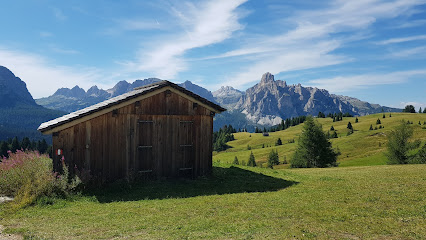
Schutzhütte Hl. Kreuz
Discover the serene beauty of Schutzhütte Hl. Kreuz, a mountain cabin offering breathtaking views and local culinary delights in the heart of the Dolomites.

Skipass Corvara
Discover Skipass Corvara, a premier ski resort in the Dolomites, offering breathtaking views, diverse slopes, and rich alpine culture for an unforgettable winter escape.

Tourismusbüro La Villa
Discover the beauty of Alta Badia at the La Villa Tourist Information Center, your guide to adventure and culture in South Tyrol.
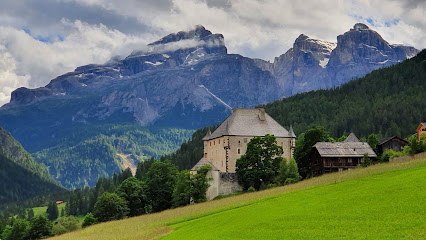
Rifugio Malga Saraghes
Experience authentic South Tyrolean cuisine in a charming mountain cabin surrounded by breathtaking Dolomite views.

Cascate del Pisciadù
Discover the breathtaking Cascate del Pisciadù, a stunning waterfall in the Dolomites perfect for hiking, photography, and enjoying nature's beauty.

Fonte delle fate
Discover the enchanting Fonte delle Fate in Poggibonsi, a serene park blending natural beauty and local folklore in the heart of Tuscany.

Valle di Badia
Discover the enchanting Valle di Badia, a premier wedding venue in Tuscany that combines elegance, delicious cuisine, and breathtaking landscapes.
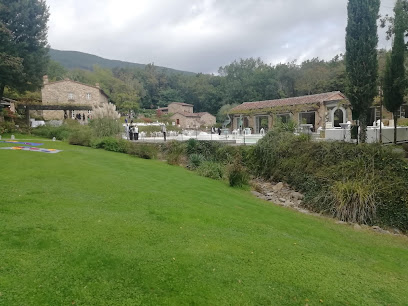
Maso Runch Hof
Discover the flavors of South Tyrol at Maso Runch Hof, where culinary excellence meets breathtaking alpine views.

Adventure Park Calfosch
Experience the thrill of Adventure Park Calfosch in the stunning Dolomites, where nature meets adventure in a fun-filled atmosphere.

Bergbahn Piz La Ila
Discover breathtaking alpine vistas and thrilling adventures at Bergbahn Piz La Ila in La Villa, South Tyrol, the gateway to the stunning Dolomites.

Museum Ladin Ursus ladinicus
Discover the rich heritage of the Ladin culture and the ancient Ursus ladinicus at Museum Ladin in the stunning Dolomites.

Unmissable attractions to see
Puez-Geisler Nature Park
Explore the stunning landscapes of Puez-Geisler Nature Park, a paradise for hiking and nature lovers in South Tyrol.
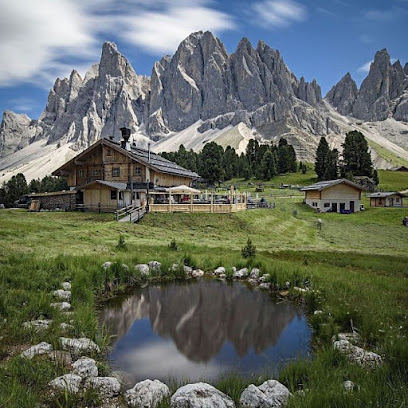
Grödner Joch / Ju de Frara
Discover the breathtaking beauty of Grödner Joch, an iconic mountain pass in the Dolomites, offering stunning views and endless outdoor adventures.
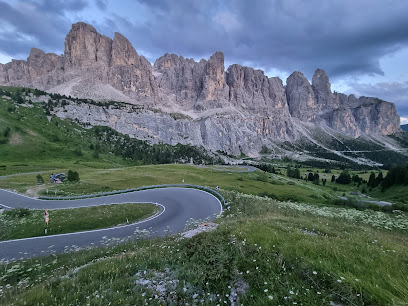
Duomo di Bolzano
Discover the stunning Duomo di Bolzano, a Gothic-Romanesque cathedral showcasing exquisite art, rich history, and breathtaking architecture in the heart of Bolzano.

Brixner Dom
Discover the breathtaking Brixner Dom, a stunning Baroque cathedral in Bressanone, showcasing rich history and architectural beauty amid the Alps.

Sessellift La Crusc
Experience breathtaking views and year-round outdoor adventure at Sessellift La Crusc, a premier ski resort in the heart of the Dolomites.

Ortisei - Val Gardena
Explore Ortisei - Val Gardena, where breathtaking hikes, rich culture, and stunning alpine views await every traveler in the heart of South Tyrol.

Castel Mareccio
Explore Castel Mareccio, a historical gem in Bolzano, showcasing medieval architecture and breathtaking views of the Dolomites.

archaeological naturalistic spa area Lagole
Experience the breathtaking beauty and rich history of Lagole, an archaeological and naturalistic spa area in the heart of the Dolomites.

Fassa Valley
Discover the breathtaking beauty and adventure of Fassa Valley, a stunning ravine in the heart of the Italian Alps, perfect for nature lovers and outdoor enthusiasts.

Chiostro di Bressanone
Explore the breathtaking Chiostro di Bressanone, a historical landmark and open-air museum showcasing stunning frescoes and serene gardens in South Tyrol.

Adventure Park Calfosch
Discover the thrill of Adventure Park Calfosch in the stunning Dolomites—an outdoor haven for adventure seekers and nature lovers alike.

Parco Cervi Sompunt - Alta Badia
Experience the natural beauty and wildlife of Parco Cervi Sompunt in the heart of Alta Badia, South Tyrol, perfect for families and nature lovers alike.

Museum Ladin Ursus ladinicus
Explore the rich heritage of the Ladin people at Museum Ladin Ursus ladinicus in the stunning Dolomites of South Tyrol.

Calfosch / Corvara Zoo
Explore the stunning Calfosch/Corvara Zoo, an enchanting wildlife park in the heart of South Tyrol with diverse animal exhibits and breathtaking mountain views.

Paternkofel
Discover the breathtaking beauty of Paternkofel, a stunning mountain peak in Auronzo di Cadore, perfect for outdoor adventures and nature appreciation.

Essential places to dine
Edelweiß Hütte
Experience authentic Italian cuisine at Edelweiß Hütte, where stunning Dolomite views meet cozy mountain charm.

Rifugio Col Pradat
Experience exquisite Italian cuisine amidst breathtaking alpine views at Rifugio Col Pradat, a hidden gem in the Dolomites.

Piz Boè Alpine Lounge
Discover culinary bliss at Piz Boè Alpine Lounge in the heart of the Dolomites—where breathtaking views meet exquisite flavors.

Alpine Restaurant Piz Arlara
Experience authentic South Tyrolean cuisine at Alpine Restaurant Piz Arlara with stunning mountain views and cozy ambiance.

La Tor
Experience authentic Italian flavors at La Tor, where exquisite pizzas meet breathtaking Dolomite views in La Villa.

AdlerKeller
Experience the finest meats and local flavors at AdlerKeller, nestled in the scenic Dolomites of Corvara in Badia.
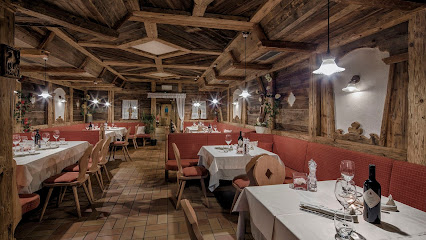
Taverna Posta Zirm
Experience authentic Italian cuisine at Taverna Posta Zirm in Corvara—where tradition meets taste amidst breathtaking Dolomite views.

Rifugio Lee
Experience authentic South Tyrolean cuisine at Rifugio Lee amidst breathtaking alpine scenery in Alta Badia.
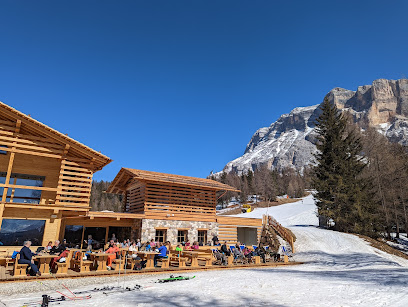
Col Alt
Experience exquisite South Tyrolean cuisine with breathtaking views at Col Alt in Corvara - your culinary adventure awaits!

Steakhouse L’Fanà Food & Wine
Experience exquisite steaks and fine wines at Steakhouse L’Fanà in La Villa, South Tyrol - where every bite tells a story.

Ütia Bamby
Discover Ütia Bamby: where authentic South Tyrolean flavors meet breathtaking views in the heart of the Dolomites.

Maso Runch Hof
Experience authentic South Tyrolean cuisine at Maso Runch Hof amidst breathtaking Dolomite views.
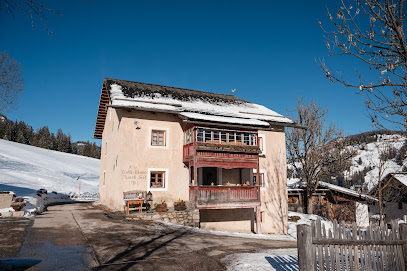
La Sieia - Restaurant Pizzeria Lounge Bar
Discover exquisite flavors at La Sieia - Fine Dining Restaurant Pizzeria Lounge Bar in San Cassiano, South Tyrol.
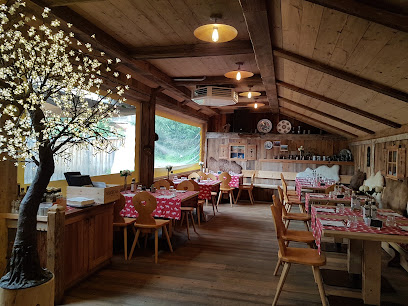
Glam's Alta Badia
Discover culinary excellence at Glam's Alta Badia – where local flavors meet breathtaking mountain views in South Tyrol.

Maso Alfarëi Hof
Experience authentic South Tyrolean cuisine at Maso Alfarëi Hof, where tradition meets stunning alpine views in Badia.

Markets, malls and hidden boutiques
Bäckerei Konditorei Café Gasser
Discover the rich flavors of South Tyrol at Bäckerei Konditorei Café Gasser, a bakery offering traditional baked goods in the heart of Badia.

Tito Speck - Il Maso dello Speck
Experience the authentic flavors of South Tyrol at Tito Speck, your destination for exquisite Italian delicacies and local specialties.

BreakOut sport inspired
Explore the Dolomites with BreakOut Sport: Your go-to destination for outdoor gear, bicycle rentals, and expert advice in Corvara.

Ski Top
Discover the finest skiing gear at Ski Top in Badia, South Tyrol, and elevate your winter sports experience in the stunning Dolomites.

Sport Kostner
Discover the perfect blend of adventure gear and local gifts at Sport Kostner in Corvara, your ultimate shopping destination in the Dolomites.

Calzature Complojer
Discover exquisite footwear at Calzature Complojer in La Val, where style meets the stunning beauty of South Tyrol.

Electro Shop SRL
Explore the best of electronics at Electro Shop SRL in Badia, your go-to destination for appliances and smartphones in the heart of South Tyrol.

SPORT ALFREDO Sportswear
Discover the ultimate sporting goods store in Corvara, offering rentals and sales for biking and skiing enthusiasts in the heart of the Dolomites.

Arte Costa
Explore Arte Costa in Colfosco: Your ultimate destination for authentic South Tyrolean souvenirs and gifts that capture the region's charm.

La Spezialité
Explore the flavors of South Tyrol at La Spezialité, a grocery store in Colfosco offering local delicacies and high-quality products.

BOTËGHES LAGAZOI
Discover high-quality sportswear and outdoor gear at BOTËGHES LAGAZOI in San Cassiano, your gateway to Alpine adventures.

Boutique Lago di Braies
Discover unique souvenirs and local crafts at Boutique Lago di Braies, the perfect stop to capture the magic of the Dolomites.

Sport Tony Srl
Discover top-quality sports gear and apparel at Sport Tony Srl in La Villa, the perfect start for your South Tyrol adventure.

Romantik - Corvara
Discover unique gifts and local crafts at Romantik - Corvara, a must-visit novelty store in the heart of the Dolomites.

Style Corvara
Discover Style Corvara, your go-to clothing store in the Dolomites for fashionable attire and high-quality alpine gear.
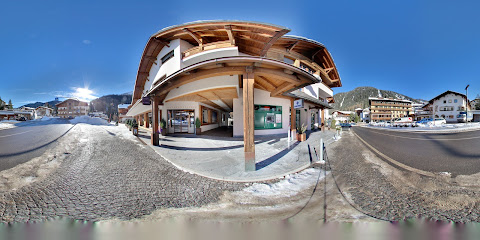
Essential bars & hidden hideouts
Edelweiß Hütte
Discover the authentic taste of Italy in the stunning Dolomites at Edelweiß Hütte, a beloved mountain cabin restaurant.

Club Moritzino - Piz la Ila
Experience breathtaking views and delightful cuisine at Club Moritzino, a mountain cabin gem in the heart of the Dolomites.

Rifugio Alpino Pralongià
Experience authentic South Tyrolean cuisine at Rifugio Alpino Pralongià, a charming mountain hut with breathtaking views in the heart of the Dolomites.

Rifugio Col Pradat
Experience authentic Italian cuisine at Rifugio Col Pradat, where breathtaking mountain views meet exquisite flavors in the heart of the Dolomites.

Piz Boè Alpine Lounge
Discover the exquisite flavors and breathtaking views at Piz Boè Alpine Lounge, your mountain retreat in the heart of the Dolomites.
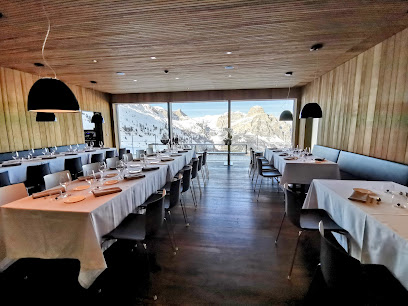
Alpine Restaurant Piz Arlara
Discover Alpine Restaurant Piz Arlara: a culinary haven offering local delicacies and stunning views in the breathtaking Dolomites.

Badia Pub
Experience authentic Irish hospitality at Badia Pub, where delicious food and local brews await in the scenic Alps of South Tyrol.

AdlerKeller
Savor the essence of South Tyrol at AdlerKeller, where gourmet meats meet breathtaking Dolomite views in a cozy alpine setting.
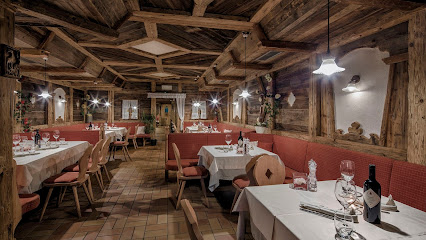
Col Alt
Discover the best of South Tyrolean cuisine at Col Alt, where breathtaking views and delicious dishes create an unforgettable dining experience.

Ristorante Bar Mesoles
Experience the authentic flavors of South Tyrol at Ristorante Bar Mesoles in Corvara, where every meal is a journey into local cuisine.

Rifugio Utia Paraciora
Discover the culinary delights and stunning vistas at Rifugio Utia Paraciora, a bar and restaurant in the heart of the Dolomites.

L'Murin Corvara
Experience the vibrant nightlife at L'Murin Corvara, a must-visit night club in the heart of the Dolomites, perfect for unwinding after a day of adventure.

L'Got
Experience the charm of L'Got, a delightful bar in Corvara, perfect for unwinding with local drinks and cozy atmosphere after exploring the Dolomites.

Bar Ristorante Al Lago Corvara
Experience authentic Italian cuisine amidst the breathtaking scenery of Corvara in Badia at Bar Ristorante Al Lago.

Altrove Lounge
Discover Altrove Lounge in Colfosco: a charming retreat offering delightful drinks and fast food in the heart of the Dolomites.

Local Phrases about Alta Badia
-
- HelloCiao
[chow] - GoodbyeAddio
[ad-dee-oh] - YesSì
[see] - NoNo
[noh] - Please/You're welcomePer favore/Prego
[pair fah-voh-reh/pray-goh] - Thank youGrazie
[gra-tsyeh] - Excuse me/SorryMi scusi/Scusa
[mee skoo-zee/skoo-sah] - How are you?Come stai?
[koh-meh stai] - Fine. And you?Bene. E tu?
[beh-neh. eh too] - Do you speak English?Parli inglese?
[pahr-lee een-gleh-zeh] - I don't understandNon capisco
[nohn kah-pee-skoh]
- HelloCiao
-
- I'd like to see the menu, pleaseVorrei vedere il menu, per favore
[vor-ray veh-deh-reh eel meh-noo, pair fah-voh-reh] - I don't eat meatNon mangio carne
[nohn mahn-joh kahr-neh] - Cheers!Salute!
[sah-loo-teh] - I would like to pay, pleaseVorrei pagare, per favore
[vor-ray pah-gah-reh, pair fah-voh-reh]
- I'd like to see the menu, pleaseVorrei vedere il menu, per favore
-
- Help!Aiuto!
[ah-yoo-toh] - Go away!Vai via!
[vah-ee vee-ah] - Call the Police!Chiama la Polizia!
[kyah-mah lah poh-lee-tsya] - Call a doctor!Chiama un dottore!
[kyah-mah oon doh-toh-reh] - I'm lostMi sono perso
[mee soh-noh pehr-soh] - I'm illSono malato
[soh-noh mah-lah-toh]
- Help!Aiuto!
-
- I'd like to buy...Vorrei comprare...
[vor-ray kohm-prah-reh] - I'm just lookingSto solo guardando
[stoh soh-loh gwar-dahn-doh] - How much is it?Quanto costa?
[kwahn-toh koh-stah] - That's too expensiveÈ troppo caro
[eh troh-poh kah-roh] - Can you lower the price?Puoi abbassare il prezzo?
[pwah-ee ab-bah-sah-reh eel preh-tsoh]
- I'd like to buy...Vorrei comprare...
-
- What time is it?Che ora è?
[keh oh-rah eh] - It's one o'clockÈ l'una
[eh loo-nah] - Half past (10)Le dieci e mezza
[leh dee-eh-chee eh meh-tsa] - MorningMattina
[mah-ttee-nah] - AfternoonPomeriggio
[poh-meh-ree-joh] - EveningSera
[seh-rah] - YesterdayIeri
[yeh-ree] - TodayOggi
[oh-jee] - TomorrowDomani
[doh-mah-nee] - 1Uno
[oo-noh] - 2Due
[doo-eh] - 3Tre
[treh] - 4Quattro
[kwah-troh] - 5Cinque
[cheen-kweh] - 6Sei
[say] - 7Sette
[set-teh] - 8Otto
[oh-toh] - 9Nove
[noh-veh] - 10Dieci
[dee-eh-chee]
- What time is it?Che ora è?
-
- Where's a/the...?Dov'è...?
[doh-veh] - What's the address?Qual è l'indirizzo?
[kwahl eh leen-dee-rits-zoh] - Can you show me (on the map)?Puoi mostrarmi (sulla mappa)?
[pwah-ee mohs-trar-mee (sool-lah mahp-pah)] - When's the next (bus)?Quando passa il prossimo (autobus)?
[kwahn-doh pahs-sah eel prohs-see-moh (ow-toh-boos)] - A ticket (to ....)Un biglietto (per ....)
[oon bee-lyet-toh (pair)]
- Where's a/the...?Dov'è...?
History of Alta Badia
-
The region of Alta Badia, nestled within the Dolomites, was once part of the Roman Empire. Evidence of Roman roads and artifacts suggests that this area was an important transit route connecting different parts of the empire. The Romans introduced advanced agricultural techniques and infrastructure that laid the groundwork for future settlements.
-
During the Middle Ages, Alta Badia saw the establishment of several small villages. The people of this region, known as the Ladin, developed a distinct culture and language that has survived to this day. The Ladin language is a Romance language that evolved from Vulgar Latin, and the people have maintained their unique traditions and customs over centuries.
-
In the late 19th and early 20th centuries, Alta Badia became part of the Austro-Hungarian Empire. This period saw significant cultural and architectural influences from the empire, which are still evident in the local buildings and traditions. The region's strategic location also made it a focal point during World War I.
-
Alta Badia was significantly impacted by World War I, particularly during the battles fought in the Dolomites. The rugged terrain of the region became a harsh battleground between the Italian and Austro-Hungarian forces. Many remnants of this period, such as trenches and fortifications, can still be found in the area, serving as poignant reminders of the conflict.
-
After World War I, Alta Badia was incorporated into Italy as part of the Treaty of Saint-Germain. This transition brought about changes in administration and governance, but the Ladin people managed to preserve their cultural identity. The region began to see more development and modernization during the interwar period and beyond.
-
In the latter half of the 20th century, Alta Badia transformed into a prominent tourist destination. The breathtaking landscapes, winter sports opportunities, and rich cultural heritage attracted visitors from around the world. The local communities have skillfully balanced the influx of tourism with the preservation of their natural environment and cultural traditions.
Alta Badia Essentials
-
Alta Badia is located in the South Tyrol region of northern Italy. The nearest international airports are Venice Marco Polo Airport (VCE), Innsbruck Airport (INN), and Verona Villafranca Airport (VRN), each about 2-3 hours away by car. From these airports, you can take a train to the closest major railway station in Brunico/Bruneck, followed by a bus or taxi to Alta Badia. There are also shuttle services available from the airports directly to Alta Badia during the winter ski season.
-
In Alta Badia, the public transport system is well-organized, with buses connecting the different villages and ski lifts. During the winter season, ski buses are frequent and convenient for getting to and from the slopes. Taxis are available but can be expensive. Renting a car is advisable if you plan to explore the surrounding areas extensively. For a more eco-friendly option, you can use the region's bike-sharing programs during the summer months.
-
The official currency in Italy is the Euro (EUR). Credit and debit cards are widely accepted in hotels, restaurants, and shops in Alta Badia. ATMs are available in most villages, but it is always good to have some cash on hand for smaller establishments and tips. Tipping is generally appreciated but not obligatory; rounding up the bill or leaving a 5-10% tip is customary.
-
Alta Badia is generally a very safe destination for tourists. The crime rate is low, and violent crimes are rare. However, it is always wise to take standard precautions like keeping an eye on your belongings in crowded places and not leaving valuables in your car. There are no specific areas with high crime rates targeting tourists, but it is always best to stay vigilant.
-
In case of emergency, dial 112 for immediate assistance. For medical emergencies, the nearest hospitals are in Brunico/Bruneck and Bolzano/Bozen, both of which are well-equipped. Alta Badia also has a well-organized mountain rescue service for emergencies on the slopes. It is advisable to have travel insurance that covers medical emergencies and winter sports if you are visiting during the ski season.
-
Fashion: Do wear comfortable and appropriate clothing for outdoor activities. In winter, dress in layers and ensure you have good-quality ski gear. Avoid wearing overly casual outfits in fine dining establishments. Religion: Do be respectful when visiting churches and chapels. Dress modestly and maintain a quiet demeanor. Public Transport: Do validate your bus ticket before boarding. Don't bring large luggage on local buses as it can be inconvenient for other passengers. Greetings: Do greet people with a friendly 'Buongiorno' (Good Morning) or 'Buonasera' (Good Evening). A handshake is common for initial meetings. Eating & Drinking: Do try local specialties like Tyrolean dumplings and Ladin cuisine. Don't rush your meals; dining is considered a leisurely and social activity. Avoid asking for ketchup or other condiments, as it might be considered disrespectful to the chef.
-
To experience Alta Badia like a local, consider visiting during the quieter shoulder seasons of spring and fall. Participate in local events and festivals such as the Ladin Carnival or the Maratona dles Dolomites cycling race. For a unique dining experience, try a 'rifugio' (mountain hut) meal, where you can enjoy traditional dishes in a cozy alpine setting. Engaging in conversation with locals in the Ladin language, if you know some phrases, can also enrich your experience.
Trending Landmarks in Alta Badia
-
Fanes-Sennes-Braies Natural Park
-
Puez-Geisler Nature Park
-
Sessellift La Crusc
-
Rifugio Alpino Pralongià
-
Schutzhütte Hl. Kreuz
-
Skipass Corvara
-
Tourismusbüro La Villa
-
Rifugio Malga Saraghes
-
Cascate del Pisciadù
-
Fonte delle fate
-
Valle di Badia
-
Maso Runch Hof
-
Adventure Park Calfosch
-
Bergbahn Piz La Ila
-
Museum Ladin Ursus ladinicus
Nearby Cities to Alta Badia
-
Things To Do in Kitzbühel
-
Things To Do in Zell am See
-
Things To Do in Bad Gastein
-
Things To Do in Venice
-
Things To Do in St. Anton am Arlberg
-
Things To Do in Kranjska Gora
-
Things To Do in Verona
-
Things To Do in Nova Gorica
-
Things To Do in St. Moritz
-
Things To Do in Davos
-
Things To Do in Bohinj
-
Things To Do in Salzburg
-
Things To Do in Bled
-
Things To Do in Arosa
-
Things To Do in Hallstatt











